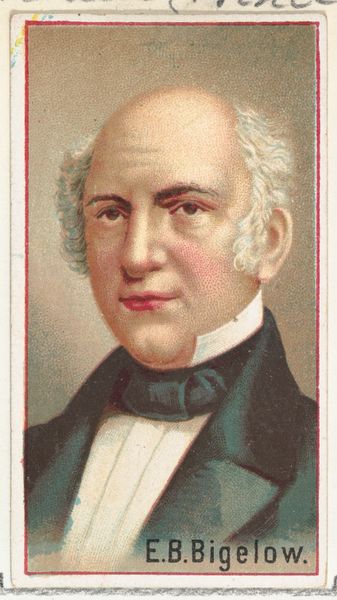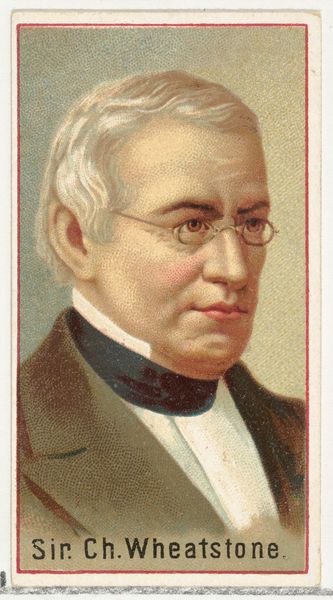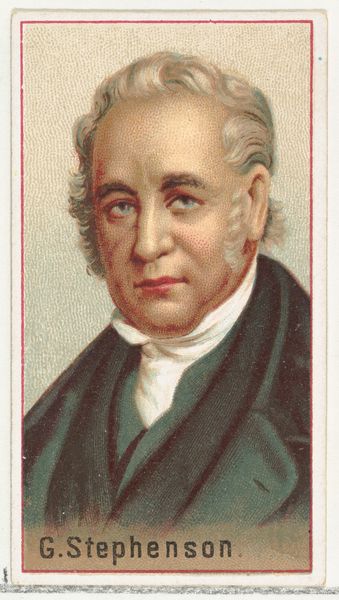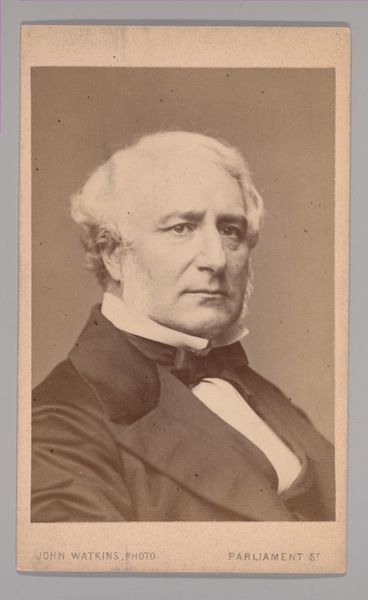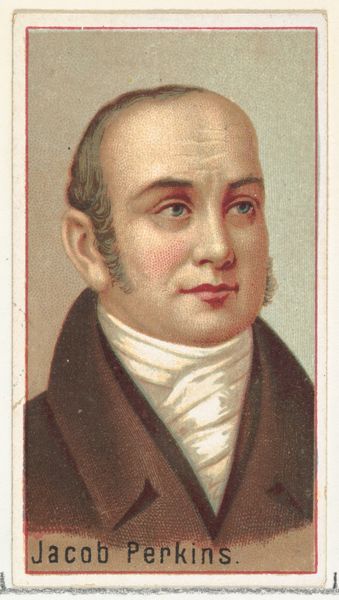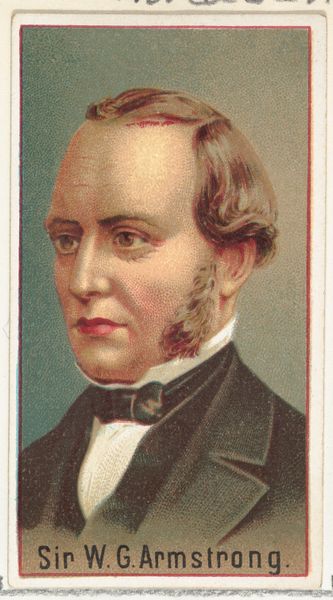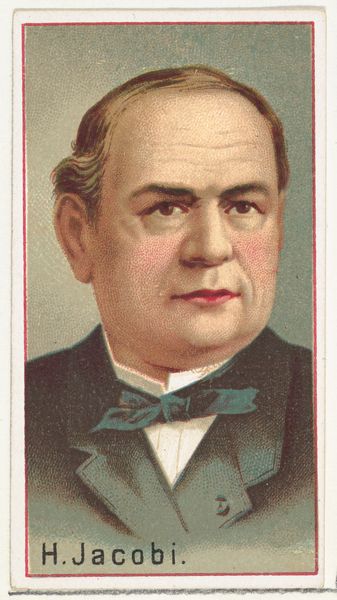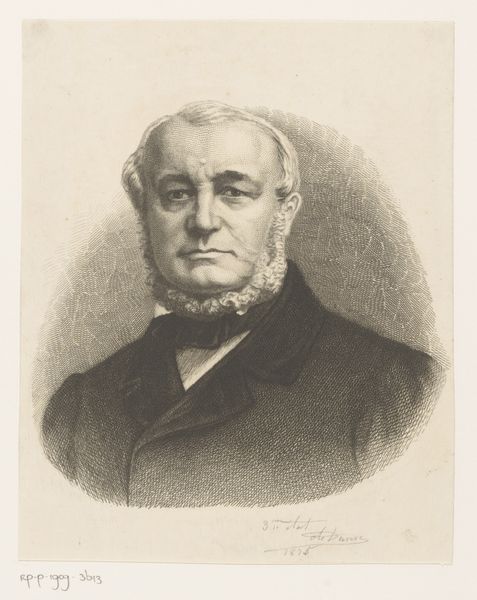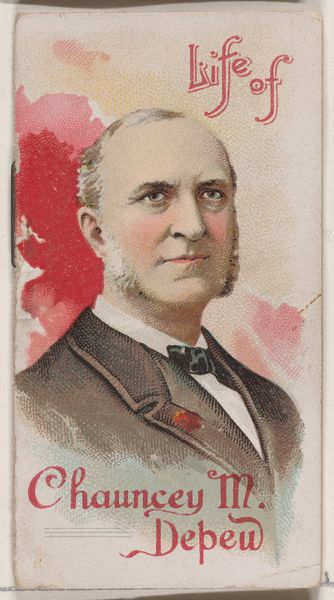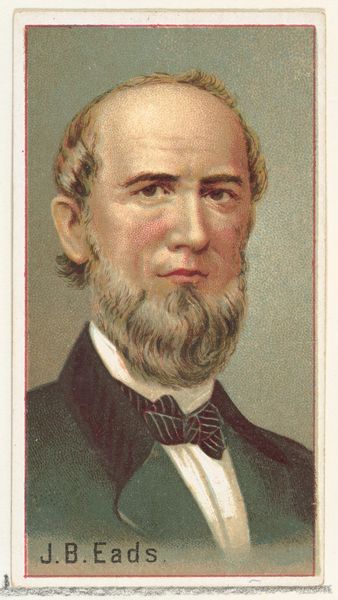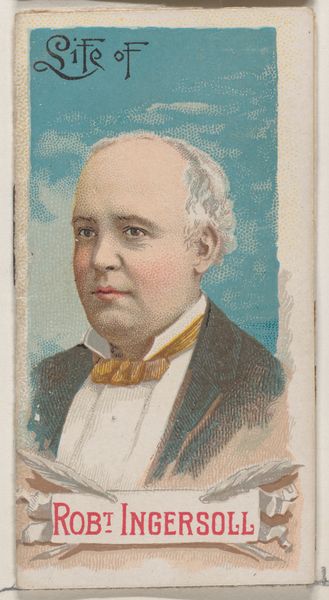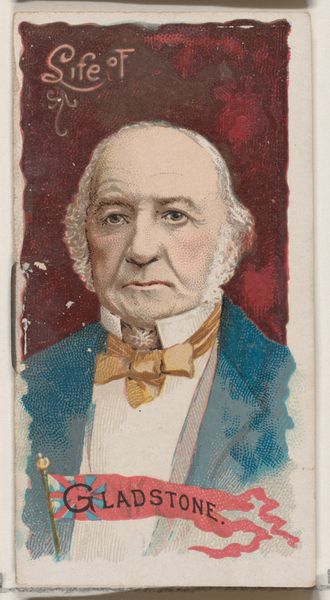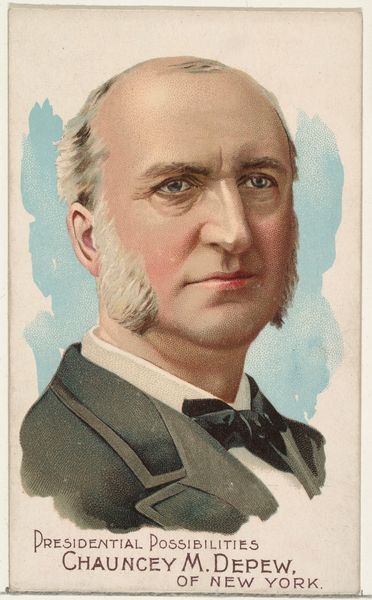
N. von Dreysse, printer's sample for the World's Inventors souvenir album (A25) for Allen & Ginter Cigarettes 1888
0:00
0:00
drawing, print
#
portrait
#
drawing
#
portrait
# print
Dimensions: Sheet: 2 3/4 x 1 1/2 in. (7 x 3.8 cm)
Copyright: Public Domain
Editor: Here we have a printer's sample from 1888, "N. von Dreysse," part of the "World's Inventors" souvenir album made for Allen & Ginter Cigarettes. It seems so formal, almost like a stamp, but what story do you see in it? Curator: Well, seeing this piece through a contemporary lens, it prompts me to think about the construction of historical narratives and power. These collectible cards, seemingly innocuous, were tools of cultural dissemination. They presented a carefully curated image of "inventors," overwhelmingly white and male, reinforcing a specific hierarchy of achievement and visibility. Who gets remembered, and why? Editor: That's a good point. I hadn’t really considered the choices behind the people selected. Does it speak to a broader trend in that era? Curator: Absolutely. Consider the Gilded Age, the era of robber barons and vast disparities of wealth. These cards served, in part, to legitimize the existing power structure. By showcasing figures of (mostly Western) progress and innovation, it implied that societal hierarchies were natural, a meritocracy based on individual genius. Editor: So, even something as simple as a cigarette card could have been making a larger statement about society? Curator: Exactly. The mass production and distribution of images are never neutral acts. By recognizing this, we can use art history to critique these subtle but powerful systems of representation and think critically about what stories are prioritized. It goes beyond simply appreciating the drawing technique, as interesting as that might be! Editor: That gives me a lot to think about regarding representation and the hidden messages within art. I appreciate this expanded understanding! Curator: It is important to consider who is in the picture, and equally crucial to reflect on who has been left out. This piece, like so many others, prompts us to actively question historical exclusions.
Comments
No comments
Be the first to comment and join the conversation on the ultimate creative platform.
